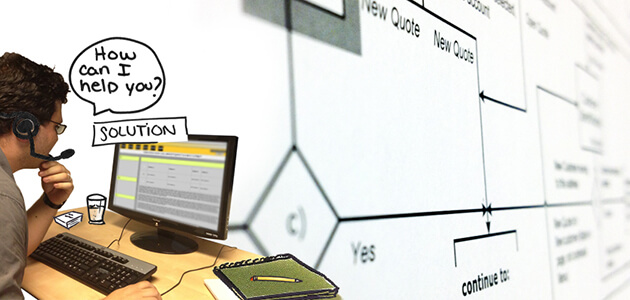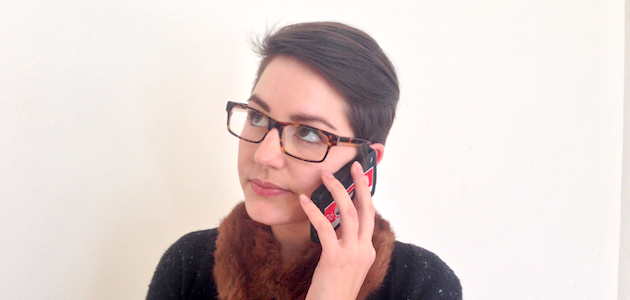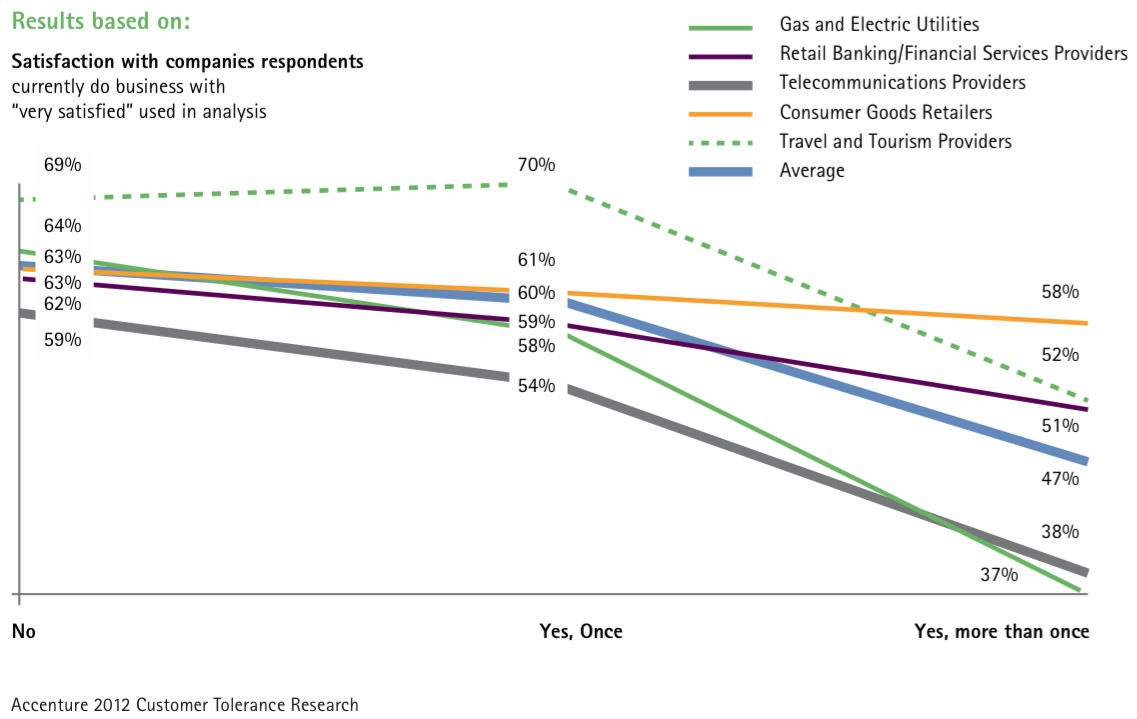
Have governments and large businesses adapted their service to mobile customers?
In highly competitive markets like retail, customer service is critical in differentiating oneself from the competition. But what is the quality of this service in the ecosystems of large businesses and government organisations, where the customers are captive?
The tolerance a customer has for waiting on a customer service call varies considerably from one country to another. As shown in the August 2014 Ebiquity survey that looked at 10,000 users in 10 countries, participants in India are the most tolerant — willing to wait 18 minutes on a customer service call before speaking with an agent. They are followed by Hong Kong (15 minutes) and Mexico (14 minutes). This is two times longer than those in Japan whose tolerance for waiting is 7 minutes. Canadians fall in the middle of the range at 12 minutes. We imagine that these findings refer to waiting on a land line and not a mobile device.

In a mobile context, long waiting times are more difficult to accept, for obvious reasons like the type of phone plan or battery life.
At Yu Centrik we have identified a number of scenarios where waiting generated frustration, such as making an appointment at a clinic:
- Our first call during business hours, the line was busy.
- Several minutes later, our second call was transferred to an automated service that did not ask to take an appointment until the 6th choice – even though it is very likely that this is a common request. Furthermore, studies also show that short term auditory memory can store up to 5 pieces of information, but most of the time only three. Read our article: How to make those frustrating automated response systems accessible Part 1 and Part 2
When trying to call government institutions , the time before you can speak with an agent was 28 minutes for Revenu Québec, and more than 20 minutes for Immigration Canada (if we are lucky to not be hung up on). More real-life examples of this surface every day. Frustrating on a landline, terrible on a mobile device!

A survey conducted by Accenture in 2012 on the tolerance of telephone services by customers in the United States and Mexico highlighted three main results:
- Companies can minimise the negative impact of a client service error if they respond quickly with an appropriate solution or a significant commercial offer for the customers.
- Customers want their problem resolved on the first call. However, the satisfaction of a customer whose problem was resolved decreases very quickly if they are put on hold for more than three minutes.
- The study shows that when transferring a call one time to an operator more capable of solving the problem, there is not much impact to customer satisfaction. On the other hand, this satisfaction diminishes rapidly if the call is transferred several times as it is often necessary to re-describe the nature of the problem each time. This scenario is common: after a call to customer service, either automated or if an agent answers, you are asked for your contact or account number, and if you are transferred to another agent you are asked for exactly the same information, and so on…

Rate of satisfaction according to call transfer (not transferred, transferred once, more than once)
To optimise client service while controlling their costs, large businesses and government organisations must first identify the key points that impact the tolerance of their customers. To achieve this, they must:
- Define a strategy and goals, and stick with them.
- Define client service processes that align with the strategy and ensure that they’re always followed.
- Establish an specific team and provide staff with the resources to attain these objectives.
- Define individual and collective measures of performance.
- Continuously monitor customer expectations and the ability of the organisation to respond efficiently.
Possible Solutions
When adapting to the constraints of a mobile customer service call, we propose several solutions:
- Set up a callback service: it allows the postponement of calls made during peak hours to calmer times of day. This strategy is very effective at minimising frustration of waiting, especially on mobile, providing you inform the user of how long it will be before they are called back, and the time is precise and reasonable (when are they going to call me back?).
- Offer multiple communication channels used by the target audience (in person, by telephone, by email, by text, by chat, by an online help service): According to an international study by OVUM, 52% of consumers use 3-4 channels to contact an organisation. A report by Intelliresponse shows that an online help service reduced call volume from 15-35% and the volume of emails 25-70%. For example, communication by SMS is more suitable for mobile millennial users. 81% of consumers under 35 consider texting as an effective way to interact with an organisation (Source Genesys – Filling a Critical Customer Contact Gap with Genesys SMS).
- Detect calls from mobile devices and offer a faster option to get to information.
Assist, our Italian partner of the UX alliance, has developed Text4Assist, a virtual natural language help system. The idea of this is to support customers by text or chat without human intervention. The technology, used in Europe by several telecommunications and media companies, solves 80-85% of consumer requests without human intervention.
The virtualisation of customer service has been trending due to a more efficient cloud: by the end of 2016, more than half of the top 1000 companies worldwide will have their customer data stored in the cloud (source: 40 Stats Shaping the Future of Contact Centers).
In short, it is time for governments and large businesses to take steps to better serve and increase the satisfaction of their mobile customers.
Any experiences or solutions you’d like to share?
References :
-
2014 GLOBAL CUSTOMER SERVICE BAROMETER – American Express – http://about.americanexpress.com/news/docs/2014x/2014-Global-Customer-Service-Barometer-US.pdf
-
How Data-Driven Insights Optimize the Service Experience: Key Findings from 2012 Customer Tolerance Research – Accenture – http://www.accenture.com/us-en/Pages/insight-data-driven-insights-optimize-service-experience.aspx
-
Improve Customer Service by Lowering Call Center Wait Times – http://www.intelliresponse.com/improve-customer-service-by-lowering-call-center-wait-times/
-
Optimizing Customer Service in a Multi-Channel World : http://crmxchange.com/uploadedFiles/Featured_White_Papers/PDF/genesys%20Optimizing_Customer_Service_in_a_Multi-Channel_World.pdf
-
Filling a Critical Customer Contact Gap with Genesys SMS : http://www.genesys.com/resources/datasheets-and-brochures/filling-a-critical-gap-in-customer-service-with-genesys-sms.pdf
-
40 Stats Shaping the Future of Contact Centers: http://blog.vpi-corp.com/blog/featured/40-stats-shaping-the-future-of-contact-centers/
Source: New feed
0 Comment(s)